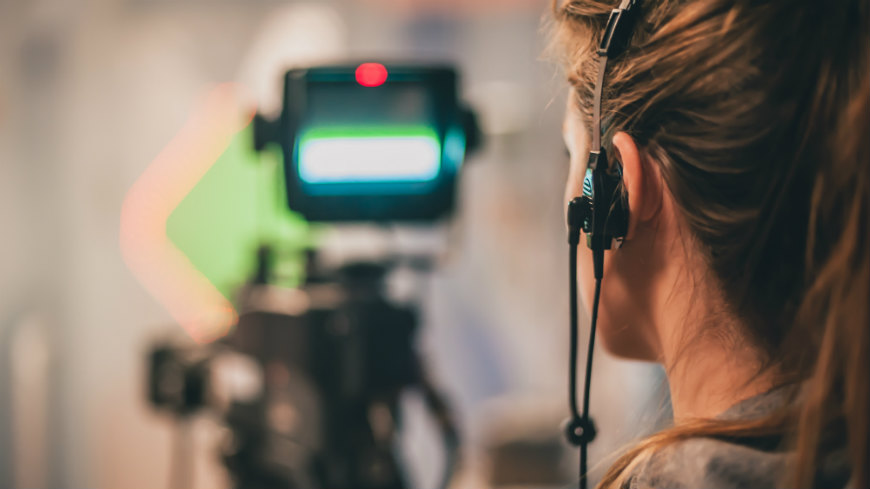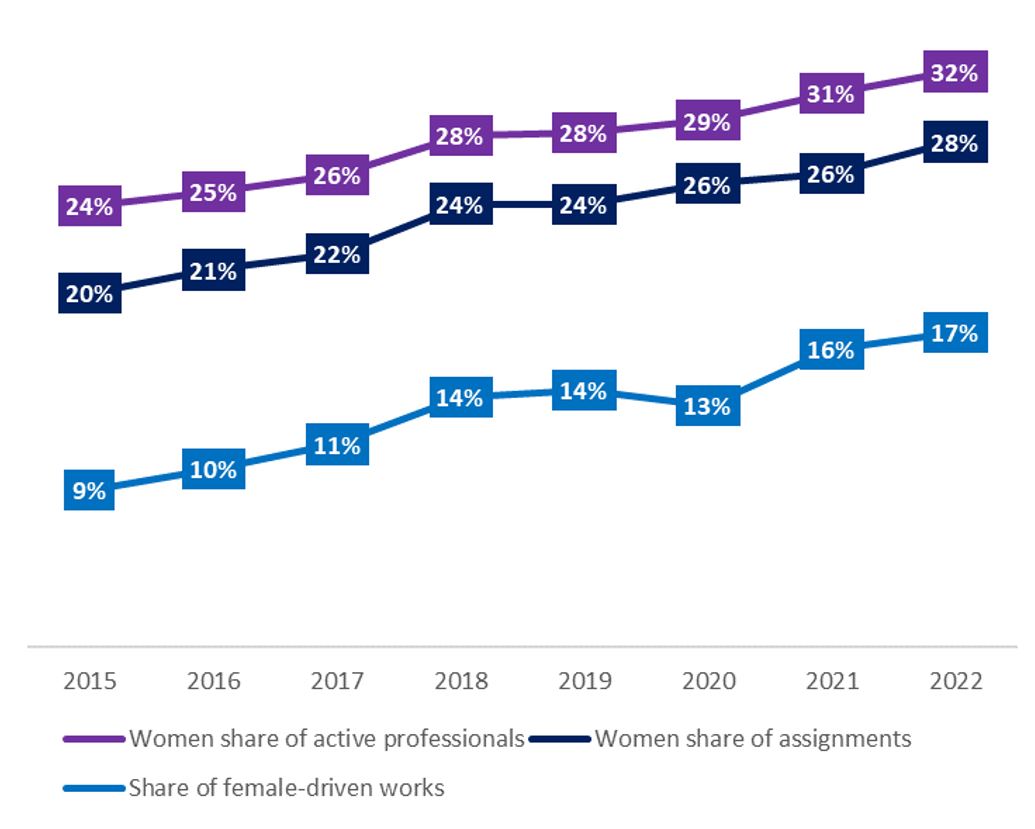Download “Female professionals in European TV/SVOD fiction production 2015-2022 figures” here
This brand-new report: “Female professionals in European TV/SVOD fiction production 2015-2022 figures” has just been published by the European Audiovisual Observatory, part of the Council of Europe in Strasbourg. This report provides an analysis of gender inequality for 6 categories of off-screen staff: directors; writers; producers; cinematographers; composers and editors and data for lead roles.
Key findings include:
- In 2022, the share of women professionals in the production of TV and SVOD fiction was 28%. The low share results from three cumulative factors:
o A low share among the active population of professionals;
o Fewer assignments for female professionals;
o Work more often shared with other professionals (e.g. female writers cowriting more often than their male counterparts).
- Gender inequality obviously varies between categories of staff. The share of women professionals is higher for producers (48%) and writers (37%), close to the average for editors (26%) and directors (25%) and significantly lower for composers (11%) and cinematographers.
- Female professionals seem to be more represented in categories of staff where several professionals work together, as it is the case for producers and writers. Conversely, when the position is generally held by only one professional (e.g., directors or cinematographers), women tend to be more under-represented.
- However, even for categories of staff with several professionals in charge of writing or producing a work, the teams are mostly led by male professionals. For example, in 2022, while female writers accounted for 37% of the writing of audiovisual fiction, female-driven teams accounted for only 28% of all writing teams (vs. 56% for male-driven teams and 16% for gender-balanced teams.
- Be it in terms of active population or of assignments, the share of women professionals has generally increased since 2015 (overall the share of women across all positions grew from 20% to 28%). But the most significant progresses have been made for the positions with a low or very low share of women (e.g. composers, cinematographers, directors), while the evolution was slower for positions like writers or producers. Just for illustrative purpose, applying the past 8 years growth rates would mean gender equality in 2029 for writers, 2032 for directors… and 2045 for composers.
- However, a more encouraging aspect could help reach gender parity sooner. Women in one category of staff are more likely to work with other women; for example, the share of women writers or producers is significantly higher when the director is a woman, and the same goes for works mainly written or produced by women. Progresses in each position are therefore likely to positively impact the others.
Share of women off-screen professionals in the production of European TV/SVOD fiction
Note: combines 6 “off-screen” positions: directors, writers, producers, cinematographers, composers, and editors
Source: European Audiovisual Observatory


